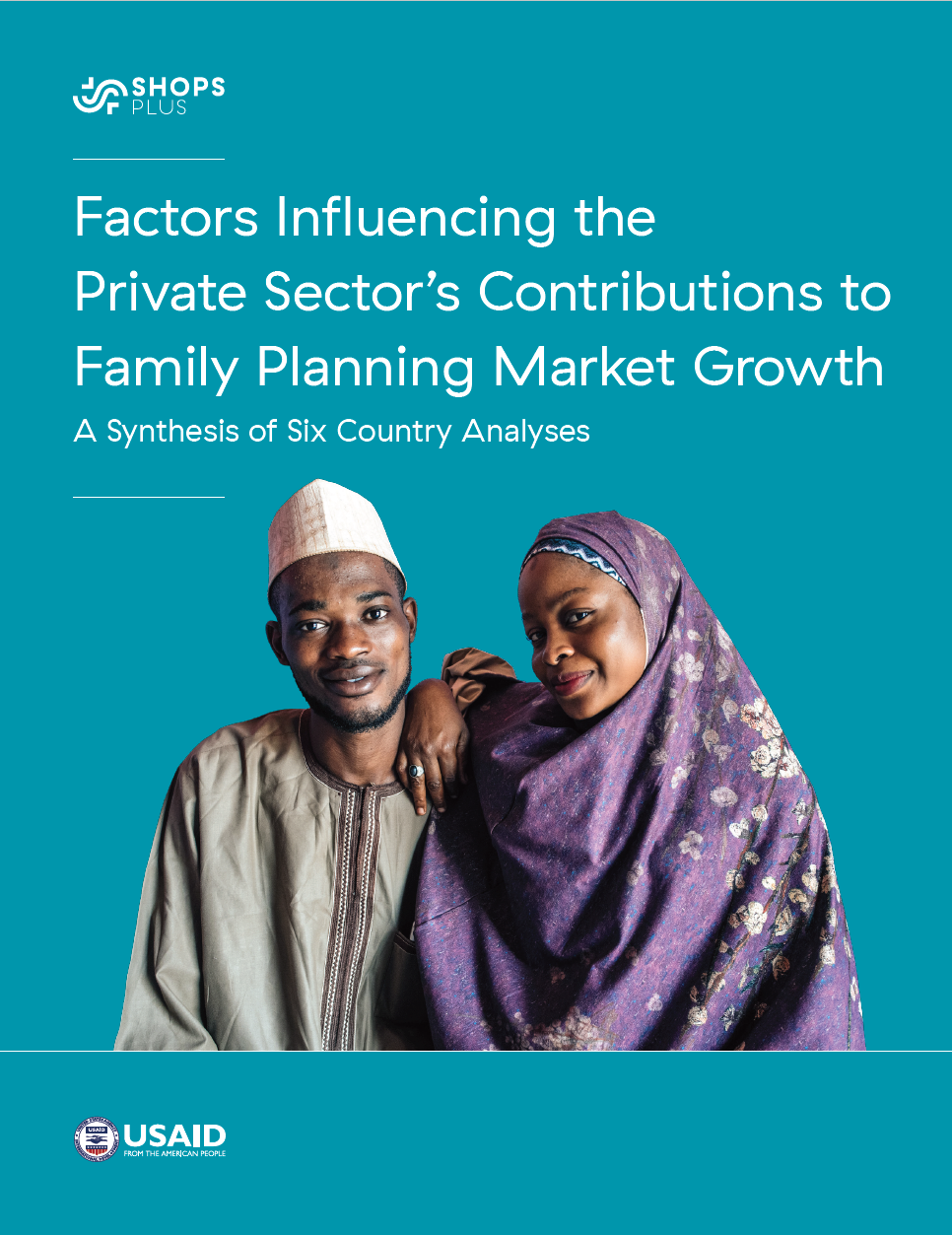Identifying private sector interventions for each stage in the growth of a family planning market
A recent SHOPS Plus analysis highlights factors that contributed to the growth of the family planning market and the contributions of the private sector. The project examined what specific types of interventions worked best at each stage of the market’s evolution in six countries. Understanding the factors that facilitate or inhibit market growth can help countries better leverage the resources available in the private sector and accelerate achievement of their national family planning goals.
“It is valuable to see the levers that could be available to donors, governments, and other family planning stakeholders,” according to Ramakrishnan Ganesan, lead author of the brief. “The types of interventions that work in an emerging market are not the same when the market is mature and the goal is to sustain gains already achieved and expand the market further.”
As a framework for its analysis, the team used a normative S-curve pattern that depicts how family planning markets have grown across low- and middle-income countries. This model starts with low prevalence and little growth on one end followed by a period of growth, which leads to a time of low growth as the modern contraceptive rate reaches its maximum.

The SHOPS Plus team examined countries where (1) the private sector has played a significant role in the family planning market and (2) the private sector role has increased as mCPR grew. This analysis looked at Bangladesh, Cambodia, Kenya, Philippines, and Tanzania. As a control, it also included Nigeria, which saw limited growth in the total family planning market despite substantial private sector contributions. Using Demographic and Health Survey data, and key informant interviews with market experts, the team identified macro-environmental, sociocultural, policy, and programmatic factors that facilitated increased private sector contributions.

A new brief pulls together findings across the six countries and makes recommendations for donors, governments, and the private sector. The recommendations, organized around the three S-curve stages, are intended to help family planning stakeholders consider how to make more targeted investments in their private health sectors to help countries and individuals achieve their voluntary family planning goals.
Click here to access the country briefs, as well as a full synthesis of the six country analyses.